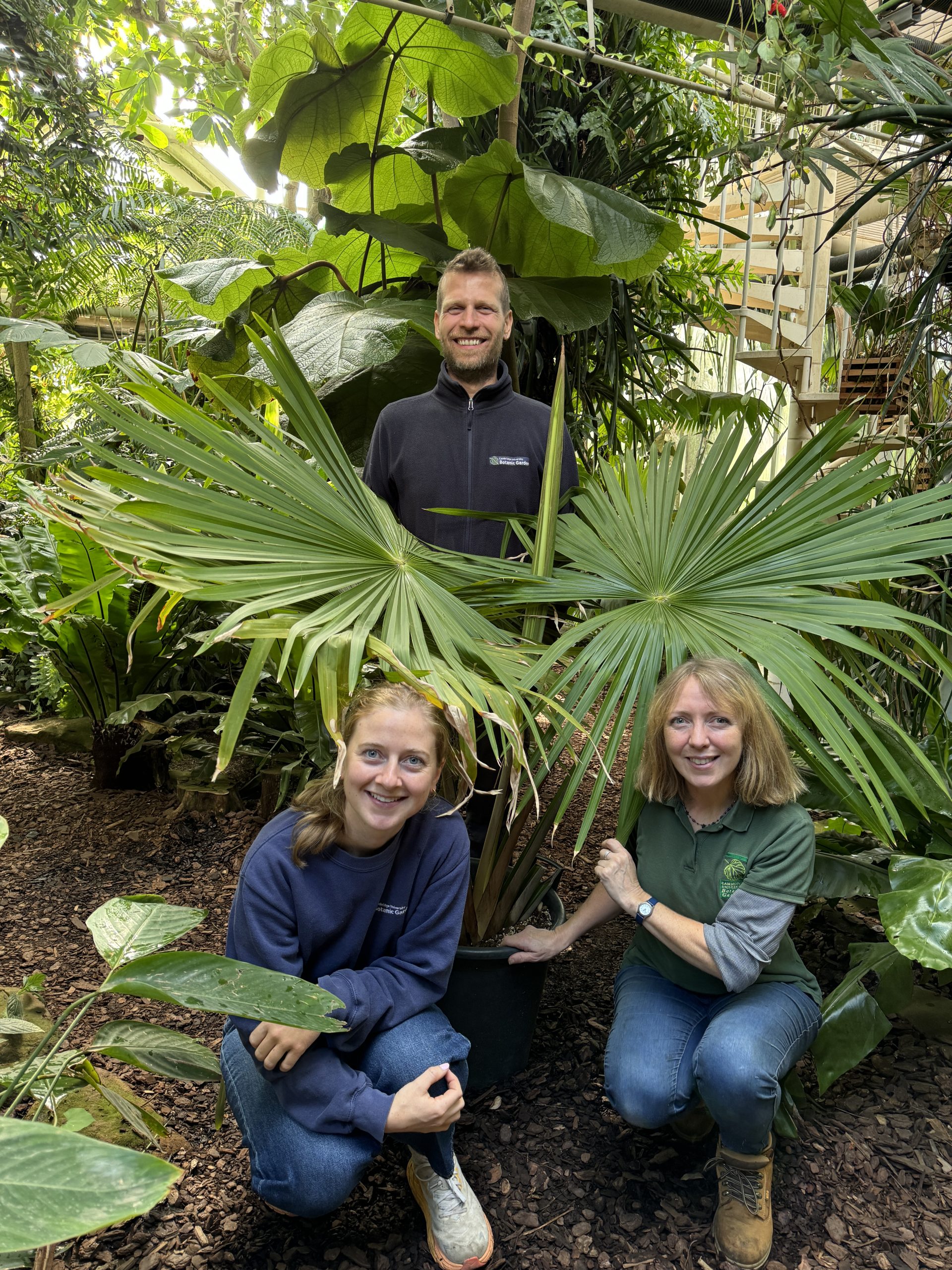Rare Tahina Palm from Cambridge University Botanic Garden Finds New Home at the Eden Project
-
Country
United Kingdom -
Region
Europe -
Workstream
Saving Plants -
Topic
Plant Conservation -
Type
News -
Source
BGCI Member
News Published: 29 October 2024
The palm, also known as the ‘Suicide Palm’ for its unique lifecycle of flowering itself to death, has been relocated to allow it to grow to its full potential.
Discovered in 2006 in the wilds of north-western Madagascar, the Tahina palm is listed as Critically Endangered on the IUCN Red List, with fewer than 40 adult specimens known to exist in the wild and a few cultivated examples scattered worldwide. This extraordinary palm, which can grow up to 18 metres tall with leaves fanning out to over five metres, had outgrown its space at CUBG, prompting its move to the Eden Project.
Luigi Leoni, Team Leader, Glasshouses and Nursery at CUBG shares the story behind the move: “The idea emerged when we realised the plant was outgrowing its space in the Glasshouses. I contacted the Eden Project as it was important to act before it became too large to relocate. It’s really exciting for the Tahina palm to be able to reach its full size atthe Eden Project with its huge roof space. Its new home will probably allow this critically endangered species to flower and produce seeds in a few decades’ time—something that would not have been possible at CUBG.”
Transporting the four-metre-tall palm from Cambridge to Cornwall required careful logistical planning. The Glasshouse team wrapped the palm with straw and shrink wrap, and with the help of four members of the Landscape and Machinery and Estate teams, it was tipped on its side and carefully manoeuvred through the Glasshouse corridor on a pallet. It was then forklifted into a van, where it was laid onto haybales and strapped into place.

Kathryn and Barbara from the Glasshouse team drove it to the Eden project where the palm underwent quarantine before being planted in the Tropical Islands area of Eden’s Rainforest Biome last week.
Aaron Hernandez Lee, the Eden Project Rainforest Biome’s horticulture team leader, says: “As horticulturists we are delighted that the Rainforest Biome is the new home for this magnificent palm, that we can play our part in the conservation of such an endangered species and that we, along with our visitors, can watch and learn from it, as it grows and experience a remarkable species that we wouldn’t normally have the opportunity to enjoy.”
This move highlights the collaborative nature of botanic gardens worldwide. CUBG has now welcomed a new, smaller Tahina palm whose size is better suited to their Glasshouse range. This was donated by the Royal Botanic Gardens, Kew to take the place of the one relocated to the Eden Project.
Kathryn, Senior Horticulturist at CUBG explains: “Global botanic gardens form a network which is hugely important to horticulture and conservation. Being able to donate a palm that is incredibly rare in the wild, to an institution where it can potentially reach flowering size, while receiving one better suited to Cambridge from a third garden, epitomises the importance of this network. We all have to work together to grow plants the best we can.”
Become a Member
Be part of the largest network of botanic gardens and plant conservation experts in the world by joining BGCI today!
Support BGCI
You can support our plant conservation efforts by sponsoring membership for small botanic gardens, contributing to the Global Botanic Garden Fund, and more!